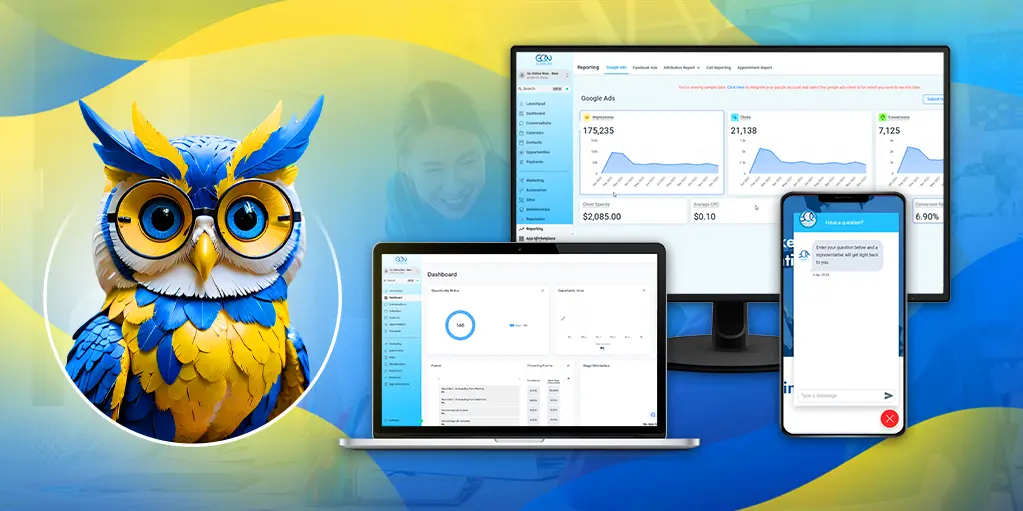Social media has become an integral part of our lives in the digital age, and it plays an important role in shaping the perception of businesses and brands. Social media marketing has emerged as a powerful tool for connecting with audiences, increasing brand visibility, and driving business growth, thanks to the large number of users actively engaged on platforms such as Instagram, Facebook, Twitter, and LinkedIn. However, this unprecedented exposure comes with its own set of difficulties. As a business owner, you must understand the profound impact of social media on the reputation of your brand and learn how to effectively navigate this landscape.
In this comprehensive guide, we’ll look at professional social media marketing guidelines to help you improve your brand image and build a positive online presence
1. Crafting a Solid Social Media Strategy
To make the most of your social media efforts, you must first develop a well-defined strategy. Your goals, target audience, content themes, and key performance indicators (KPIs) are all outlined in a social media strategy. You can ensure that every action you take on these platforms contributes to the growth and reputation of your brand by aligning your social media efforts with your overall business objectives.
Determine Your Objectives
Your social media marketing objectives should be closely related to your business goals. Begin by asking yourself what you want to accomplish with your social media efforts. Common objectives include:
- Increasing Brand Awareness: If your brand is new or you want to expand into new markets, increasing brand awareness may be a primary goal. This entails informing potential customers about the existence, values, and unique offerings of your brand.
- Driving Website Traffic: social media can be an effective source of website traffic. You can direct users to your website via social media posts and advertisements, where they can learn more about your products or services and possibly make a purchase.
- Lead Generation: For many businesses, social media is an effective lead generation channel. Lead magnets, such as free e-books or webinars, can be used to entice users to provide their contact information and express interest in your products.
- Building a community of engaged followers: This can have a significant impact on your brand’s reputation. Active audience engagement through comments, messages, and discussions can foster a sense of connection and loyalty.
Understand Your Target Market
Understanding your audience is essential for creating compelling content that will appeal to them. Conduct extensive research to determine your target audience’s demographics, interests, pain points, and preferences. This knowledge will guide your content creation and ensure that your message reaches the right people.
- Demographic Research: Determine your target audience’s age, gender, location, and other relevant demographic information. This information will assist you in tailoring your content and messaging to specific segments.
- Psychographic Analysis: Learn more about your target audience’s interests, values, beliefs, and way of life. Understanding their motivations and preferences can assist you in creating content that directly addresses their needs and desires.
- Analyze how your target audience: Interact with social media platforms. Determine when they are most active, the types of content they prefer, and the social media channels they prefer.
Create Content Themes That Are Consistent
Building brand recognition requires consistency. Create content themes that are consistent with your brand’s identity and values. Sticking to consistent themes, whether it’s sharing industry insights, showcasing behind-the-scenes glimpses of your business, or highlighting customer success stories, helps create a cohesive brand narrative.
Brand Storytelling: Use social media to authentically tell your brand’s story. Share the mission, vision, and journey that led to the creation of your company. To establish an emotional connection with your audience, emphasize the human side of your brand.
Educational Content: Establish your brand as an industry authority by sharing educational content that adds value to the lives of your target audience. Blog posts, infographics, how-to videos, and informative guides are all examples of this.
User-Generated Content (UGC): Encourage your fans to create and share brand-related content. UGC not only increases trust but also adds authenticity to the image of your brand.
Analyze Social Media Analytics
Track your social media analytics on a regular basis to determine the effectiveness of your strategy. Pay attention to metrics such as engagement, reach, click-through rates, and conversion rates. By analyzing this data, you can determine which tactics are effective and which require improvement.
- Likes, comments, shares, and retweets are examples of engagement metrics: These indicate how well your content is received by your target audience and whether it encourages interaction.
- Reach and Impressions: Reach is the number of unique users who have viewed your content, whereas impressions are the total number of times your content has been viewed. Monitoring these metrics can help you understand your brand’s visibility on social media.
- Click-Through Rates (CTR): The percentage of users who clicked on a specific link or CTA in your social media post is measured by CTR. A high CTR indicates that your content is engaging and motivating users to take action.
- Conversion Rates: Conversion rates reveal how many users completed a desired action after interacting with your social media content, such as signing up for a newsletter or making a purchase.

2. Leveraging Social Media Advertising
While organic social media reach can be beneficial, the landscape has become increasingly competitive. Consider investing in social media advertising to reach a larger audience and accelerate your brand’s growth.
Instagram Marketing
Instagram has become a powerhouse for brand promotion, with over a billion active users. You can target specific demographics, interests, and behaviors with Instagram marketing, making it easier to connect with potential customers.
- Instagram Ad Formats: Instagram has a variety of ad formats, including photo ads, video ads, carousel ads (multiple images or videos in a single post), and stories ads.
- Instagram Influencer Marketing: Collaborating with influencers can significantly increase your brand’s reach and credibility. Influencers can create sponsored posts or stories about your company’s products or services.
- Instagram Shopping: Tag products in your posts and stories with the Instagram Shopping feature, allowing users to click on the tags and make purchases directly on your website.
Ads on Facebook
Facebook’s advertising capabilities are robust, allowing you to create highly targeted campaigns based on user data. Its large user base and advanced targeting options make it an excellent platform for expanding the reach of your brand.
- Custom Audiences: You can create custom audiences with Facebook ads based on a variety of criteria, such as website visitors, email subscribers, or people who have interacted with your content.
- Lookalike Audiences: Lookalike audiences are users who have similar characteristics to your existing customers. Facebook’s algorithms search for users with similar demographics and behaviors, allowing you to reach out to new potential customers.
- Video Ads: Video content has been shown to be extremely engaging on Facebook. Consider making short, captivating video ads to grab users’ attention in their news feeds.
Twitter Marketing
The fast-paced environment of Twitter allows for real-time social media engagement with your audience. Promoted tweets and trends can help spread your message and generate buzz about your brand.
- Promoted tweets: Promoted tweets are regular tweets that you pay to have displayed to a larger audience. They are displayed in users’ timelines and can be tailored to specific demographics or interests.
- Promoted Trends: Promoted trends are hashtags that you pay to have placed at the top of the list of trending topics. When users participate in the conversation, your brand’s visibility increases and social media engagement increases.
- Twitter Cards: Create rich media experiences within your tweets by using Twitter Cards. Images, videos, app downloads, and lead generation forms can be included in these cards, making your tweets more interactive and eye-catching.
- Twitter Lists and Influencer Engagement: Use Twitter lists to keep track of key customers, industry leaders, and influencers. Retweet their content, mention them in your tweets, and join relevant discussions to interact with these people.
LinkedIn Marketing Campaigns
LinkedIn is an essential platform for B2B businesses to connect with industry professionals and decision-makers. Sponsored content and InMail campaigns can effectively reach your professional target audience.
- Sponsored Content: Use sponsored content to promote articles, blog posts, and other valuable content directly to the LinkedIn feeds of your target audience. This strategy establishes your brand as a thought leader and raises brand awareness among professionals.
- LinkedIn InMail: With LinkedIn InMail, you can send personalized messages to LinkedIn users even if you are not connected with them. InMail can be used to nurture leads, invite people to events or webinars, and build relationships with potential clients.
- LinkedIn Groups: Join LinkedIn Groups that are relevant to your industry or niche. Participate in discussions, share valuable insights, and establish yourself as a subject matter expert. This can lead to more exposure and networking opportunities.

3. Handling Negative Feedback and Online Reviews
As your brand becomes more visible on social media, you may receive negative feedback or unfavorable online reviews. It is critical to deal with such situations constructively in order to maintain a positive brand image.
Prompt and professional response
When confronted with negative feedback, resist the urge to ignore or delete it. Respond instead quickly and professionally. Recognize the problem, apologize if necessary, and offer a solution. You can turn negative experiences into positive ones by demonstrating that you value customer feedback.
- Active listening: Active listening entails taking the time to fully comprehend the customer’s concern. Demonstrate empathy and make certain that your response addresses their specific issue.
- Responses: Public vs. Private: In some cases, addressing the issue publicly can demonstrate your commitment to customer service. However, for more complex issues or to protect the customer’s privacy, direct messaging or email should be used.
Make Private Conversations
In some cases, it’s best to take the conversation offline in order to address customer concerns more personally. Provide an email or phone number where customers can contact you directly for additional assistance.
- Demonstrate Empathy: Express genuine concern for the customer’s experience and assure them that you are dedicated to resolving their problem.
- Follow Up: After resolving the customer’s issue, ensure that they are satisfied with the outcome. This extra step demonstrates that you appreciate their feedback and are concerned about their experience.
Encourage Positive Feedback
Encourage happy customers to share their good experiences on social media or review sites. Positive reviews serve as social proof, increasing potential customers’ trust and enhancing your brand’s reputation.
- Request Reviews: Don’t be afraid to ask satisfied customers for feedback. A call-to-action can be included in emails, on your website, or in social media posts.
- Consider offering incentives: Consider offering incentives to customers who leave positive reviews, such as discounts or exclusive content. However, be upfront about your strategy and avoid manipulating reviews.
4. Making a Good First Impression
Maintaining a positive brand image on social media is a continuous process that necessitates consistency and authenticity.
Be genuine and forthright.
On social media, authenticity is highly valued. Be open and honest about your company, products, and services. Share behind-the-scenes content to humanize your brand and strengthen your relationship with your audience.
- Share Your Brand Story: Tell the origins, values, and mission of your brand. Authentic storytelling connects users with your brand on a deeper level and fosters trust.
- Behind-the-Scenes Content: Showing the people behind your brand and giving users a peek into your day-to-day operations humanizes your online presence.
- Transparency and honesty: If mistakes occur, be honest about them and communicate your plan to correct the situation. Transparency increases credibility and demonstrates that your brand takes responsibility seriously.
Participate with Your Audience
Social media is a two-way channel of communication. Respond to comments, messages, and mentions to engage your audience. Recognize and appreciate positive interactions, and address concerns as soon as possible.
- Timely Responses: As soon as possible, respond to comments and messages. Users value brands that are responsive and attentive to their requirements.
- Personalization: Address users by their names or usernames whenever possible to create a more personalized interaction.
- Request Feedback: Encourage your audience to provide feedback and suggestions. Actively seeking feedback demonstrates that you value their input and are eager to improve your products or services.
Make use of Influencer Marketing
Influencer marketing makes use of influencers’ popularity and credibility to promote your brand. Collaboration with influencers who share your brand values can significantly increase your reach and credibility.
- Identify Relevant Influencers: Conduct research to identify influencers whose audiences are similar to your target market’s. Find influencers who are genuine supporters of your industry or products.
- Authentic Partnerships: Form genuine alliances with influencers who genuinely care about your brand. This ensures that their followers perceive their endorsements as genuine and credible.
- Consider collaborating with micro-influencers: Consider collaborating with micro-influencers who have smaller but highly engaged audiences. Micro-influencers frequently have more personal connections with their followers, which can result in more powerful brand endorsements.
Twitter promotion
The fast-paced environment of Twitter allows for real-time engagement with your audience. Twitter promotion and trends can help spread your message and generate buzz about your brand.
- Promoted tweets: Promoted tweets are regular tweets that you pay to have displayed to a larger audience. They are displayed in users’ timelines and can be tailored to specific demographics or interests.
- Promoted Trends: Promoted trends are hashtags that you pay to have placed at the top of the list of trending topics. When users participate in the conversation, your brand’s visibility increases and engagement increases.
- Twitter Cards: Use Twitter Cards to create rich media experiences within your tweets. These cards can include images, videos, app downloads, or lead generation forms, making your tweets more interactive and eye-catching.
- Twitter Lists and Influencer Engagement: Create Twitter lists to organize influencers, industry leaders, and key customers. Engage with these individuals by retweeting their content, mentioning them in your tweets, and participating in relevant discussions.
LinkedIn Campaigns
For B2B businesses, LinkedIn is an essential platform to connect with industry professionals and decision-makers. LinkedIn campaigns and InMail campaigns can effectively reach your target audience in the professional sphere.
- Sponsored Content: Use sponsored content to promote articles, blog posts, and other valuable content directly to your target audience’s LinkedIn feeds. This approach positions your brand as a thought leader and increases brand awareness among professionals.
- LinkedIn InMail: InMail allows you to send personalized messages to LinkedIn users, even if you are not connected with them. Use InMail strategically to nurture leads, invite people to events or webinars, or build relationships with potential clients.
- LinkedIn Groups: Engage with LinkedIn Groups related to your industry or niche. Participate in discussions, share valuable insights, and establish yourself as an expert in your field. This can lead to increased visibility and networking opportunities.
5. Handling Negative Feedback and Online Reviews
As your brand gains visibility on social media, you might encounter negative feedback or unfavorable online reviews. Dealing with such situations in a constructive manner is vital for maintaining a positive brand image.
Respond Promptly and Professionally
When faced with negative feedback, avoid ignoring or deleting it. Instead, respond promptly and professionally. Acknowledge the issue, apologize if necessary, and offer a resolution. By demonstrating that you value customer feedback, you can turn negative experiences into positive ones.
- Active Listening: Take the time to understand the customer’s concern fully. Show empathy and make sure your response addresses their specific issue.
- Public vs. Private Responses: In some cases, addressing the problem publicly can showcase your dedication to customer service. However, for more complex issues or to protect the customer’s privacy, it’s better to take the conversation to direct messaging or email.
Take Conversations Private
In some cases, it’s best to move the conversation offline to address customer concerns in a more personal manner. Provide a contact email or phone number where customers can reach out directly for further assistance.
- Show Empathy: Express genuine concern for the customer’s experience and assure them that you are committed to resolving their issue.
- Follow Up: After resolving the customer’s concern, follow up to ensure they are satisfied with the outcome. This extra step shows that you value their feedback and care about their experience.
Encourage Positive Reviews
Encourage satisfied customers to share their positive experiences on social media or review platforms. Positive reviews act as social proof, building trust among potential customers and bolstering your brand’s reputation.
- Request Reviews: Don’t be afraid to ask happy customers to leave reviews. You can include a call-to-action in emails, on your website, or through social media posts.
- Offer Incentives: Consider offering incentives, such as discounts or exclusive content, to customers who leave positive reviews. However, be transparent about this approach and avoid manipulating reviews.

6. Creating Viral Content and Fostering Social Media Engagement
Viral content has the ability to catapult your brand to new heights. While achieving virality is difficult and unpredictable, certain strategies can help you create shareable content.
Accept Creativity and Originality
Think outside the box to generate creative ideas that will appeal to your target audience. Content that is unique and original is more likely to capture attention and encourage sharing.
- Brainstorming Sessions: Hold brainstorming sessions with your marketing team to come up with new content ideas. Encourage innovation and the use of unconventional approaches.
- Trending Topics and Challenges: Keep an eye on trending topics and challenges on social media and come up with creative ways to participate in relevant conversations without being too promotional.
- Emotion and Humor: Include humor, emotion, or relatable situations in your content. People are more likely to share content that makes them laugh or evokes strong emotions.
Make use of multimedia
Use multimedia such as images, videos, infographics, and GIFs to make your content more engaging and shareable.
- Video Content: Video is a powerful medium that can quickly capture attention. Consider making short, captivating videos that tell a story or highlight your products.
- Infographics are visually: Infographics are visually appealing and can effectively present complex information in an easy-to-digest format. Use infographics to communicate industry statistics, tips, or step-by-step instructions.
- Visual Branding: Make sure that the visual elements of your brand, such as logos and colors, are consistent across all social media platforms. Consistent visual branding aids in the recognition of a brand.
Run competitions and giveaways
Contests and giveaways can create buzz and encourage user participation. To attract the right participants and maximize social media engagement, make sure the prizes are relevant to your target audience.
- Define Specific Goals: Before launching a contest or giveaway, establish specific goals that align with your social media strategy. Do you want to raise brand awareness, gain followers, or drive traffic to your website?
- Choose the Best Prize: The prize you offer should be appealing to your target audience and consistent with your brand. Consider giving away your products or services, exclusive experiences, or complementary items.
- Establish Entry Rules: Establish the rules for your contest or giveaway. Participants can be asked to follow your social media accounts, like and share your posts, tag friends, or create user-generated content with specific hashtags.
- Promote widely: Spread the word about your contest or giveaway on all of your social media channels, your website, and via email marketing. Encourage your followers to tell their friends and family about the opportunity in order to broaden your reach.
Work with Users and Followers
Involve your audience in the creation of your content. Conduct polls, solicit feedback, and encourage users to share their brand-related experiences. User-generated content (UGC) can be an effective means of fostering a sense of community and trust.
- User Polls and Surveys: Use social media to conduct polls and surveys to gather valuable insights and understand your audience’s preferences. Use the results to fine-tune your content and offerings.
- UGC campaigns: Encourage your followers to create and share content related to your brand, products, or services. UGC not only increases trust but also adds authenticity to the image of your brand.
- Customer Highlights: Highlight happy customers and their interactions with your brand. To demonstrate the value you bring to your customers’ lives, share testimonials, success stories, or customer reviews.
- Crowdsourced Ideas: Engage your audience by soliciting suggestions or feedback on potential new products or services. People value participation and have a stronger bond with brands that listen to their feedback.
7. Measuring Social Media Impact with Analytics
The effectiveness of your social media marketing efforts is determined by how well you measure and analyze your results. Social media analytics can help you make better decisions and optimize your strategies by providing valuable insights.
Metrics for Social Media Impact
- Reach: This metric counts the number of distinct users who have viewed your content. A higher reach indicates that your content is reaching a larger number of people.
- Impressions: The total number of times your content has been viewed, including multiple views by the same user, is represented by impressions. It demonstrates your brand’s overall visibility on social media.
- Engagement Rate: The percentage of your audience who interacts with your content via likes, comments, shares, and clicks is calculated as the Social Media Impact rate. A high Social Media Impact rate indicates that your content is being received favorably by your target audience.
- Click-Through Rate (CTR): The percentage of users who clicked on a link or CTA in your social media post is measured by CTR. It indicates how effective your content is at influencing users to act.
- Conversion Rate: The percentage of users who completed a desired action, such as signing up for a newsletter or making a purchase, after interacting with your social media content is referred to as the conversion rate.
Social Media Analytics Software
- Native Platform Insights: Most social media platforms include analytics tools that provide critical information about your performance. Facebook Insights, Instagram Insights, and Twitter Analytics, for example, provide useful metrics and data.
- Third-Party Analytics Tools: There are numerous third-party analytics tools available that can provide more in-depth insights and assist you in tracking your performance across multiple platforms. Hootsuite, Sprout Social, and Buffer are some popular options.
Analysis and optimization are ongoing
Monitor your social media analytics on a regular basis to identify trends, patterns, and areas for improvement. Review your data on a regular basis to ensure that your strategies are in line with your objectives.
- A/B Testing: Experiment with various types of content, posting times, and ad formats to see what works best for your target audience. A/B testing enables you to optimize your strategy using data-driven insights.
- Analysis of Competitors: Monitor your competitors’ social media activities. Analyzing their strategies can provide you with helpful insights and ideas for your own campaigns.
- Revisiting Your Social Media Strategy: As needed, revisit and update your social media strategy based on your analytics and ongoing analysis. An adaptable strategy allows you to respond to changing trends and audience preferences.

Conclusion
Finally, social media marketing has transformed the way businesses interact with their customers. You can harness the full potential of these platforms to positively shape your brand’s reputation by implementing a well-crafted social media strategy, leveraging social media advertising opportunities, handling negative feedback gracefully, and building a positive brand image. Remember that social media is constantly changing, and staying up to date on the latest trends and analytics is critical for long-term success. Accept the power of social media marketing and watch as your brand’s reputation grows in the digital realm. You can cultivate a positive brand image that resonates with your audience and fosters long-term relationships with your customers by being authentic, engaging, and strategic in your online presence.
Take Action Now, Supercharge Your Online Marketing! 🚀
Ready to take your organization’s marketing to the next level? 🚀 Contact us now to unlock the full potential of online marketing! 🌟 Let’s grow your business, attract more clients, and save money on effective marketing strategies. 💼 Fill out the form here ➡️ https://bit.ly/3p0bBS5 or book a convenient Zoom meeting ➡️ https://bit.ly/3TR3Wn6. 📆 Don’t miss this opportunity to get all your burning questions answered! 🔥 Let’s supercharge your marketing efforts together! 💪






One Response